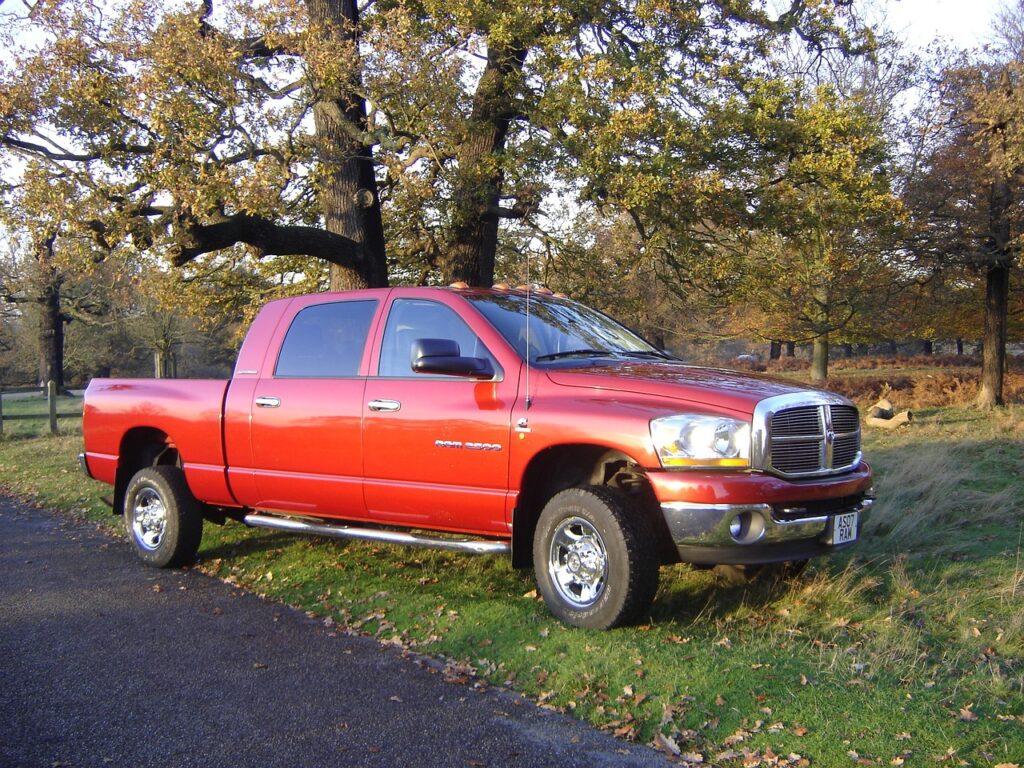On March 17, Rio Grande Valley news outlet KRGV (Channel 5 News) reported on an accident that occurred in Edinburg the evening before, tragically leaving one motorist dead.
Texas Department of Public Safety (DPS) Sargeant Maria Hernandez, who led the investigation into the accident, said that the victim, 34-year-old Sergio Alejandro Padilla-Luna, died on the evening of Saturday, March 16 after a collision with a second motorist.
Padilla-Luna was driving his Chevrolet Trailblazer westbound on Farm-to-Market Road 1925 (FM1925) behind a Dodge Ram 2500 pickup occupied by a male driver, an adult woman, and three children. When the Dodge attempted to turn left on North Tower Road, Padilla-Luna failed to control his speed, causing him to crash head-on into the rear of the pickup.
But what other factors contributed to the crash? We review the crash data to explore what happened.
How We Analyzed This Crash
Our legal analysis is derived from multiple sources. While we reference news reports and quotes from law enforcement, which we have linked to for context and verification, our primary data comes from the Texas Department of Transportation (TxDOT). Using the state authority’s Crash Records Information System (C.R.I.S.), we can dig into the contributing factors cited, the damage sustained by each vehicle and its occupants, and more to illustrate what happened and identify key lessons or takeaways for preventing similar tragedies and keeping Texas roads safer.
The Value of News Reports versus Crash Data
News reports can be a valuable and accurate source of information on accidents happening across the RGV. But, little information is often made available to the public — often rightly so — for several reasons:
The Accident Is Still Under Investigation
Reporters want to be quick off the mark and cover stories as soon as possible after they occur. This often means reporting on the fact a crash has occurred even when they do not know the full story because law enforcement does not yet have all the details. After the initial report, updates can occur rapidly or very little additional information might be provided. Often, reporters (and, therefore, the wider public) rely on investigating officers or department representatives commenting on progress, which is at the discretion of those public officials.
To Protect the Identities of the Parties Involved
When an accident involves minors or an individual has died in a crash, reports may limit the information divulged to protect their identities, whether out of respect for the decedent, to accommodate the wishes of family members who have requested their loved one’s name be kept out of the press, or to give law enforcement time to notify victims’ families to ensure they do not learn of their loved one’s death or injury via the news.
To Maintain Journalistic Integrity
With events often unfolding quickly and updates coming from multiple sources, journalists must balance speed and a desire to break the news with the need to vet and scrutinize the information they receive. Reputable news outlets want to develop and maintain a reputation of trust and authority, and they can only achieve that if they consistently verify information is correct before publishing or announcing it. Oversight here can result in statements from individuals with an “angle” rather than neutral reporting, false witness accounts from individuals who were not at the scene but want their “15 minutes of fame”, or misquoting or misrepresenting information from a reliable party, any of which can negatively impact a news outlet’s reputation.
How the Edinburg Accident Occurred
The Edinburg accident at the intersection of FM1925 and North Tower Road is a refreshing change. Law enforcement — and particularly DPS Sargeant Hernandez — was forthcoming about the results of the investigation into the crash, providing the public with a significant amount of information on the accident just one day after it happened. Such transparency means those interested in the story are not left in the dark if there is no follow-up report or forced to wait until the crash data is uploaded to C.R.I.S. — which can take several weeks — for additional information and context.
Still, we examined the crash data to verify the reports were correct. As we touched on above, quotes can be misinterpreted, typos can creep in, and details can be entirely inaccurate. Fortunately, none of these scenarios were true of this collision, and the crash data indicates the accident played out as the initial reports described.
However, the crash data yields some interesting additional insights.
What the Crash Data Tells Us
The initial reports indicate that DPS responded to the collision around 6:41 pm. The C.R.I.S. data reveals this was when the accident occurred; law enforcement was notified at 6:44 pm and officers arrived at the scene just four minutes later. However, the impact of the crash was so severe that Padilla-Luna died instantly.
DPS explained that the accident occurred because the Chevy driver failed to control his speed, leading him to crash with the Dodge pickup. But does the crash report indicate why Padilla-Luna was unable to control his speed?
A possible contributing factor cited in the report sheds some additional light.
Determining Intoxication after Death
The officer who completed the accident report listed “intoxicated – alcohol” as a possible contributing factor. It was likely not cited as a secondary factor (which we can interpret as “confirmed” causes), as there was no indication or physical way to verify intoxication because the driver was, sadly, already deceased.
Breath, blood, and urine tests confirm whether an individual is intoxicated, but physical cues like slurring, stumbling, boisterous behavior, and heavy or bloodshot eyes can be equally helpful, suggesting to a police officer that a driver may have been drinking. Of course, investigators must look to alternative methods for testing for alcohol after death.
Postmortem blood alcohol concentrations (BACs) can be difficult to establish, and various factors can falsely elevate the BAC; rather than relying on blood samples, toxicologists recommend testing the vitreous humor — the mass within the eye between the lens and retina. This factor might indicate why the alcohol specimen type taken after the crash was “Other”, rather than the more common “blood” specimen type.
However, the crash data does not indicate the result (the report states “No Data”). This indicates that intoxication may have been a factor, but equally, a test may have been conducted to rule out the possibility of the driver being under the influence.
The Damage Severity
Texas accident investigators must assign a “vehicle damage rating” when compiling an accident report. This rating comprises several elements:
- The area that sustained the impact
- The direction of the force
- The severity of the impact
The crash report notes that the Chevrolet Trailblazer — driven by Padillo-Luna — sustained “Front-End Damage” at a 12 o’clock (head-on) angle. Notably, the damage severity recorded was “7” — the highest number investigators can assign. This severity rating is reserved for impact that causes significant structural damage or destroys part or all of a vehicle. In most cases, the damage is so severe that a vehicle is deemed a total loss; even with extensive repairs, the cost is likely to exceed its worth or the cost of purchasing a new vehicle.
Knowing this, it’s little surprise that the impact killed the driver immediately.
The Other Vehicle
But what of the three occupants of the second vehicle?
As we’d expect from the sequence of events — the Chevy crashed head-on into the rear of the Dodge Ram — the Dodge sustained back-end damage at a 6 o’clock angle. The damage severity was less than that sustained by the Trailblazer (cited as “5”), but this number still represents significant vehicle damage.
It’s fortunate, then, that the three occupants — a 22-year-old male driver, a 20-year-old female, and a one-year-old baby — were all uninjured.
We shouldn’t underestimate the role of the weight and design of the vehicle in this outcome. A Dodge Ram is heavier than a Chevrolet Trailblazer (the Gross Vehicle Weight Rating (GVWR) of a 2007 Chevrolet Trailblazer is 5,550 pounds versus the minimum 9,900-pound GVWR of a 2022 Dodge Ram 2500). Heavier vehicles not only absorb and distribute the force of a crash more efficiently, but they also transfer it to lighter vehicles, resulting in the Chevrolet sustaining such catastrophic damage.
But the Dodge truck’s design, with the bed jutting out at the rear, likely saved at least one life in this crash. Had the cab been positioned at the rear of the vehicle — where the Trailblazer collided with the truck, the outcome could have been even more devastating.
The Devastating Reality of Preventable Accidents
Another interesting note is that the license class assigned to the drivers of both vehicles is “unlicensed”.
This information adds another layer to the accident. It’s tempting to get what-ifs and alternate scenarios — had the Dodge driver caused the accident, Padilla-Luna’s family would almost certainly have a compensation claim for wrongful death; had any of the three occupants of the Dodge been hurt and Padilla-Luna survived, they might try to hold the Chevrolet driver liable for their injuries — but perhaps the most sobering and devastating fact that this entire narrative and crash report illuminate is that if both drivers were unlicensed, neither of them should have been on the road. And if they abided by the rules of the road designed to keep us all safe, a life would likely not have been lost that Saturday evening.
If you’ve been injured or lost a loved one in a car accident in Edinburg, McAllen, Brownsville, Harlingen, Mission, or anywhere else in the Rio Grande Valley due to someone else’s negligent actions, you could be entitled to compensation for your losses.
Patino Law Firm offers a free, no-obligation case review with our McAllen accident attorney so you can see if you have a claim. We speak English and Spanish and can communicate in whichever language is easier for you, and we can come to you if you cannot come to our McAllen office. Call 855-LAW-NINJA for an informal chat about your options or to book an appointment. You can reach us 24/7.


